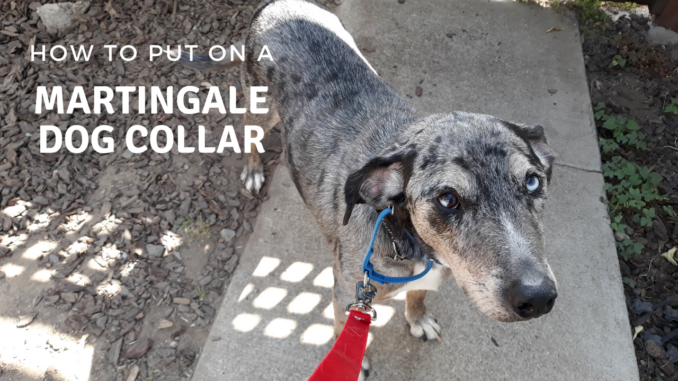
The martingale is a humane and effective walking collar. Learn how to select, adjust, and use this versatile tool to walk your dog.
Why a martingale?
I first encountered the martingale collar when working for a humane society. They were used by the volunteers to walk the many dogs up for adoption. The shelter wanted to move away from choke chains and other aversive training devices, but they did need control over the often big and unruly dogs in their care. They found that the martingale fit the bill.
The martingale collar will tighten in a way similar to a choke chain or slip lead, but not infinitely. Its figure-8 design allows it to tighten only to the degree you set. This gives it a double degree of safety, as the collar won’t literally choke the dog, and neither will it fall off if the leash is too loose.
Different kinds
There are two main kinds of martingales: those with and without a snap release. I prefer the kind without the snap because they cannot come open while walking. That said, I am only walking one or two dogs at a time and there is no playing. If I had any concern about the collar getting hung up on something, I might want that snap as an emergency release.
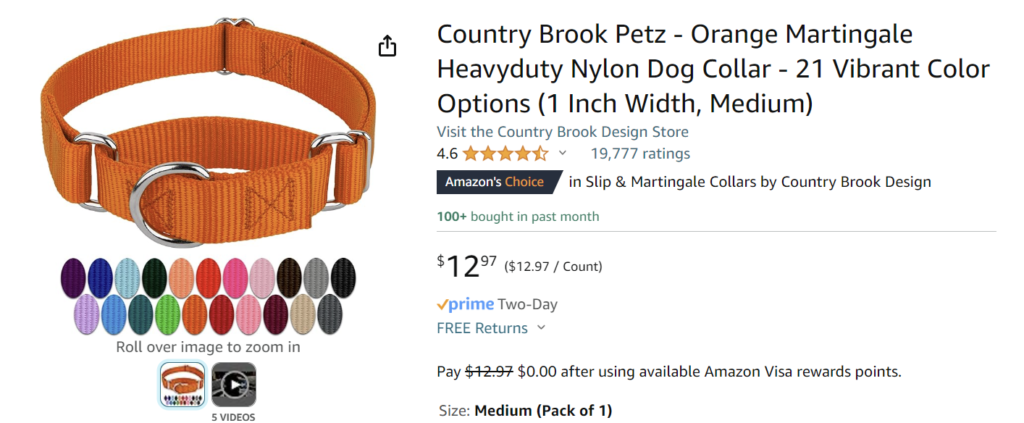
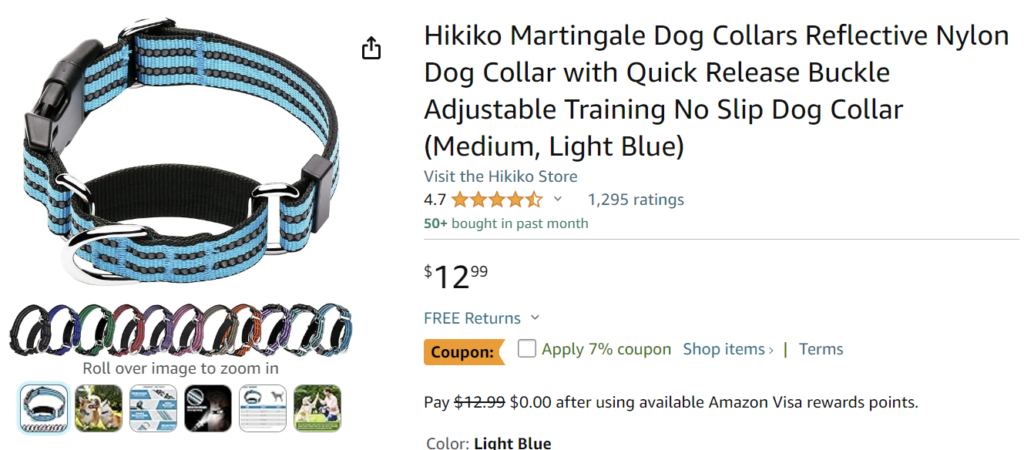
Most martingales are made of nylon but there are some made of leather or partially rubberized. Whatever the material, it must be flexible in order to work properly. Some have a chain as the part the leash attaches to. I don’t like this because it doesn’t have as smooth an action as the all-nylon kind, plus the metal can become chipped or corroded and irritate your dog’s skin.
The collars can be purchased at some pet supply shops and online. Cost varies from $10-$30 with many good options in the lower price point. They come in a wide variety of colors from basic solids to flowers, camo, and other cool prints. They come in widths of 1/2in to 1-1/2in depending on the size of the dog. The extra-wide models are popular with the owners of sensitive long-necked dogs like Greyhounds.
Since making this video, I have seen an innovation in martingales that makes them easier to use: the two-tone model. You’ll understand why this is important when we get to the section on fitting.
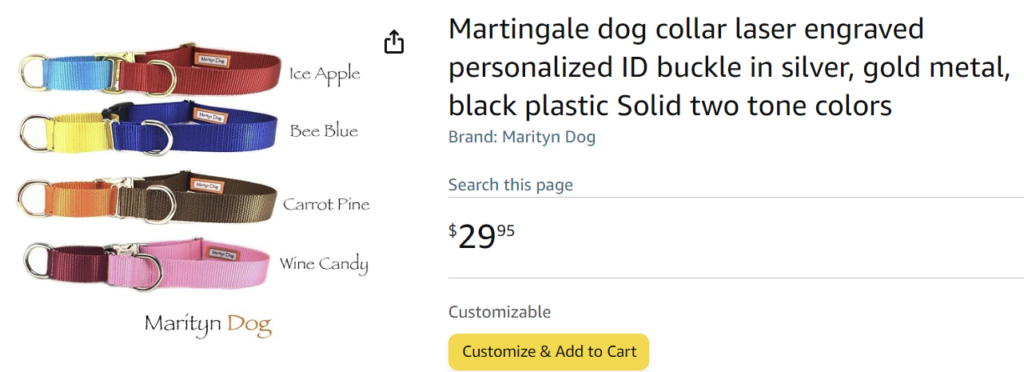
Choosing the right size and fitting
Collar fitting is the bane of any dog owner. Unless you can try the collar on, it is difficult to choose ones that will fit just right. I recently ordered embroidered collars for my dogs. I measured their necks and chose sizes that seemed right, but they were still too big. I got them to fit, but had to take in the adjustment quite a bit.
For this reason, it may be a good idea to start with an inexpensive basic martingale before choosing a fancier or custom one. Once you find a size that fits just right, you can order other models as long as they are the same length and width.
When viewed by itself, the collar looks like a mess. How the heck does it go on? Just remember that the part you attach the leash to is NOT the part that goes around the neck. The larger circle of the figure-8 is the part that goes around the neck. The two-tone collars make this part easier because you can see which part is which.
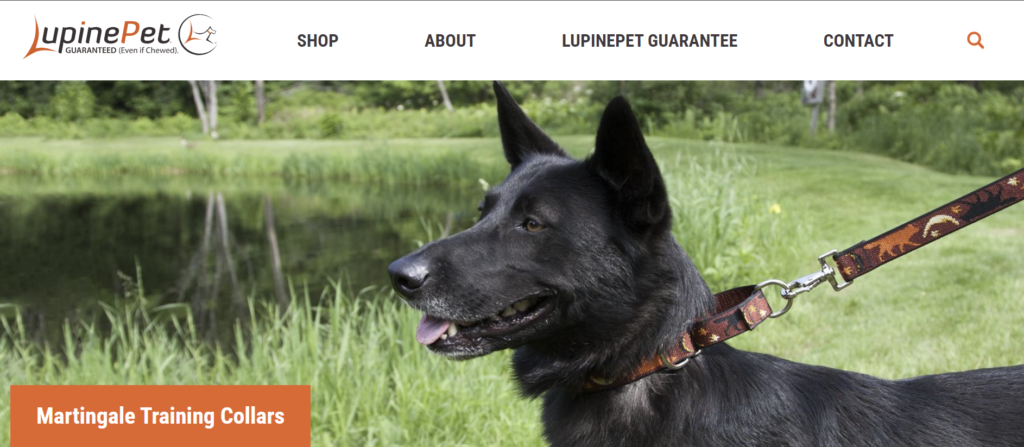
The collar should fit comfortably but not so loose that it will fall off. How this is accomplished depends on the dog. Kaden, the model for this article, has a pointy nose. His martingale easily slips on and fits on his neck without further adjustment. If you have a dog with a big blocky head and a smaller neck, you may need to loosen the collar, slip it on, then tighten it when it is in place. If you use the kind with the snap release, you will only have to do this once as you won’t be slipping it over the head but rather putting it on around the neck like a regular collar.
When you apply pressure from the leash, the collar should tighten to the point that it won’t come off, but not so tight that it chokes the dog.
Safety
Walking collars are for walking only. It drives me crazy when I see dogs wearing a martingale, slip lead, or even choke chain all the time. The potential for a tragic accident is all too great. These collars can get hung up on any number of things, even the dog’s own paws, and cause serious injury or death because they won’t break or slip off.
Collars of any kind should not be left on in playgroups, especially of younger, rowdier dogs. While playing, one dog can get his lower jaw stuck in the collar of the other. In a panic, the dogs will pull and twist, making the situation worse. Sadly, dogs die every year from this kind of accident.
I personally experienced this with my own two dogs years ago and I can tell you it was terrifying. With great effort I was able to get my hand where it needed to be and undo the clip release of the collar. By then my dog had passed out from being choked, but he soon recovered and I learned my lesson.
ID collar vs. walking collar
As mentioned, walking collars are for just that. They are put on for a walk and taken off afterwards. In addition to being microchipped, dogs should wear a collar with ID at all times. This ensures that, should they become lost, you can be quickly contacted and reunited.
Because this ID is so important, the leash should never be attached to that collar! I have been involved in too many cases of missing dogs who, for whatever reason, pulled their head out of the collar and took off. Now they are on the loose with no visible ID and it will be that much harder to track them down. Only attach the leash to the walking collar, even if you are just talking your dog out “for a minute.” Accidents can happen in a moment, and you don’t want to be looking for your lost dog.
A properly fitted and used martingale collar will help you have a pleasant and safe walking experience with your dog.



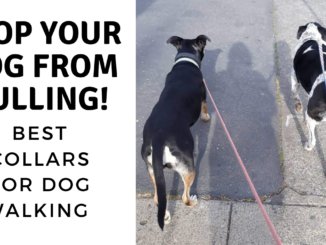

Be the first to comment